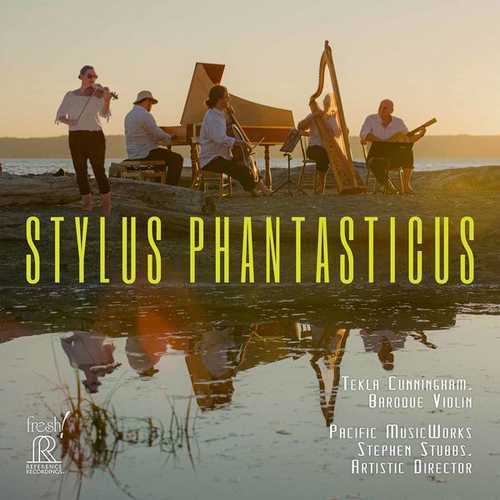

Composer: Ignazio Albertini, Heinrich Ignaz Franz von Biber, Francesco Corbetta, Carlo Farina, Giovanni Battista Fontana, Giovanni de Macque, Giovanni Antonio Pandolfi Mealli, Johann Heinrich Schmelzer, Marco Uccellini
Performer: Pacific Masterworks, Tekla Cunningham, William Skeen, Henry Lebedinsky, Stephen Stubbs, Maxine Eilander
Format: FLAC (tracks)
Label: Reference Recordings
Catalogue: FR-742
Release: 2021
Size: 1.52 GB
Recovery: +3%
Scan: yes
01. Farina: Sonata Seconda detta la Desperata
Macque: Prime Stravaganze
02. Tocatta (Arr. for Baroque Harp)
Uccellini: Sonate, correnti et arie, Op. 4
03. No. 2, Detta la luciminia contenta
04. Corbetta: Partite sopra folia
05. Mealli: Sonata per violino e basso detta ‘La Castella’
06. Fontana: Violin Sonata in D Major, F 1475.02
07. Biber: Violin Sonata No. 1 in A major
08. Schmelzer: Ciaconna in A (from Serenada in Mascara)
09. Albertini: Sonata I
Schmelzer: Sonatae unarum fidium
10. No. 2 in F Major
11. No. 4 in D Major
Reference Recordings proudly presents this unique album with 11 works of early Baroque composers. The famous Jesuit Father Athanasius Kircher (1602–1680) wrote in Book VII of the Musurgia Universalis describing different musical styles, but, in particular, he defined a “fantastical style” for instruments: “The Stylus phantasticus is appropriate to instruments. It is the most free and unfettered method of composition, bound to nothing, neither to words, nor to a harmonious subject. It is organized with regard to manifest invention, the hidden reason of harmony, and an ingenious, skilled connection of harmonic phrases and fugues. And it is divided into those pieces which are commonly called Phantasias, Ricercatas, Toccatas, and Sonatas.” The compositions included on this recording provide prime examples of the lineage of the stylus phantasticus from its Italian roots, before Kircher wrote his definition, to its later development into an “imperial style” associated with Central Europe and the Habsburgs.



